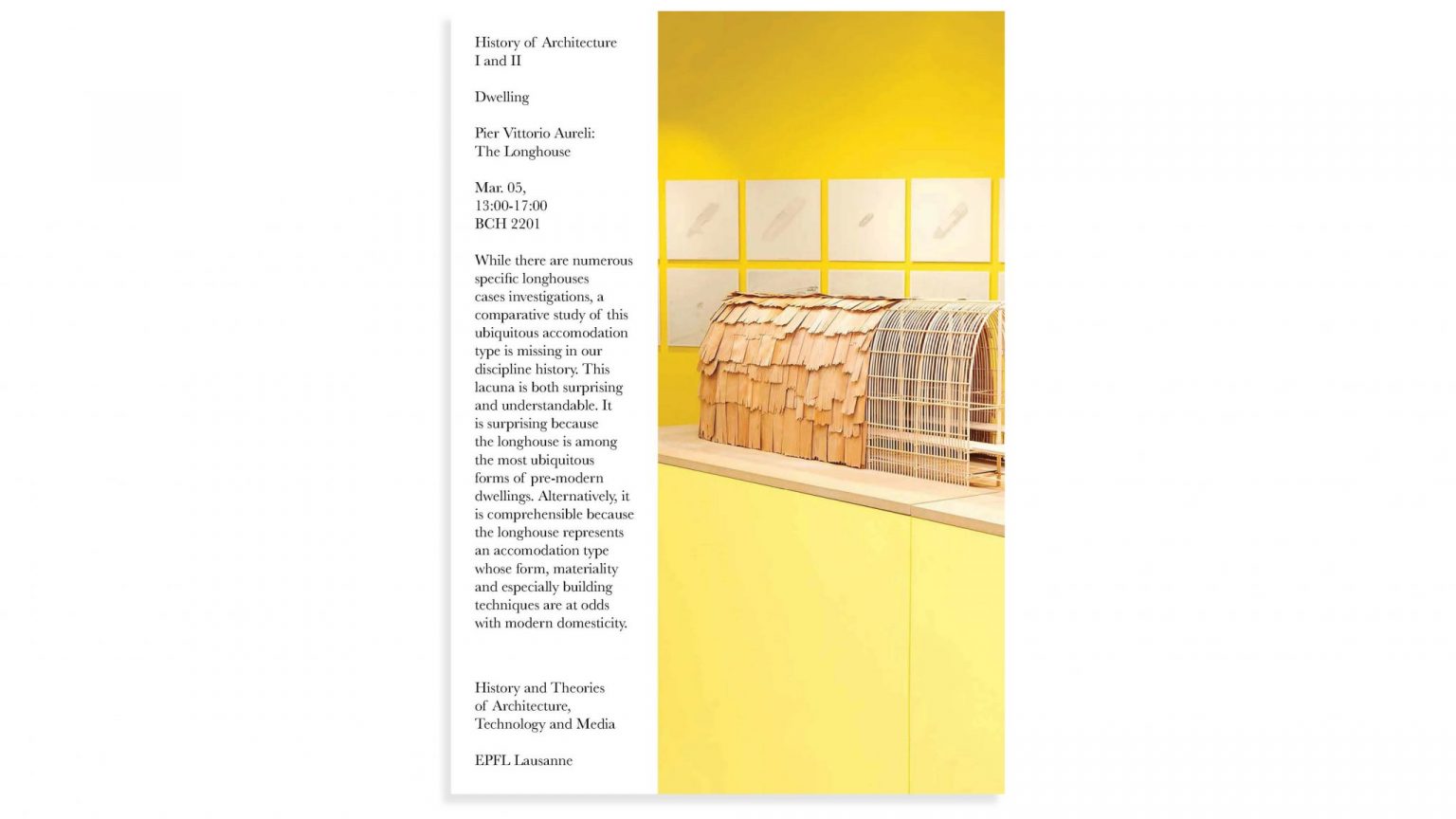Guest Lecture by Pier Vittorio Aureli

Dogma, “The Longhouse”, Exhibited in Toronto Metropolitan University, School of Architecture, 2023. Source: Dogma.
The Longhouse
The lecture will discuss the longhouse, the linear, long, and narrow habitation typology that existed and still exists in many parts of the world, including South-East Asia, Europe, and North America. While there are numerous scholarly investigations of specific cases of longhouses, a comparative study of this ubiquitous type of habitation is missing in the history of our discipline. This lacuna is both surprising and understandable. It is surprising because the longhouse is among the most ubiquitous forms of pre-modern dwellings. Alternatively, it is comprehensible because the longhouse represents a type of habitation whose form, materiality, inhabitation, and especially building techniques are at odds with modern domesticity. Unlike dominant forms of domesticity that reinforce private property and the nuclear family, longhouses were instead communal structures that could house an extended family, kin group or entire community under one roof. Longhouses often blurred the distinction between the sacred and profane, public, and private, residence and workplace. Avoiding romanticizing – or worse, fetishizing – the longhouse, this lecture will discuss and problematise its declensions throughout many parts of the world, inevitably challenging parts of contemporary assumptions about domestic space and its history.